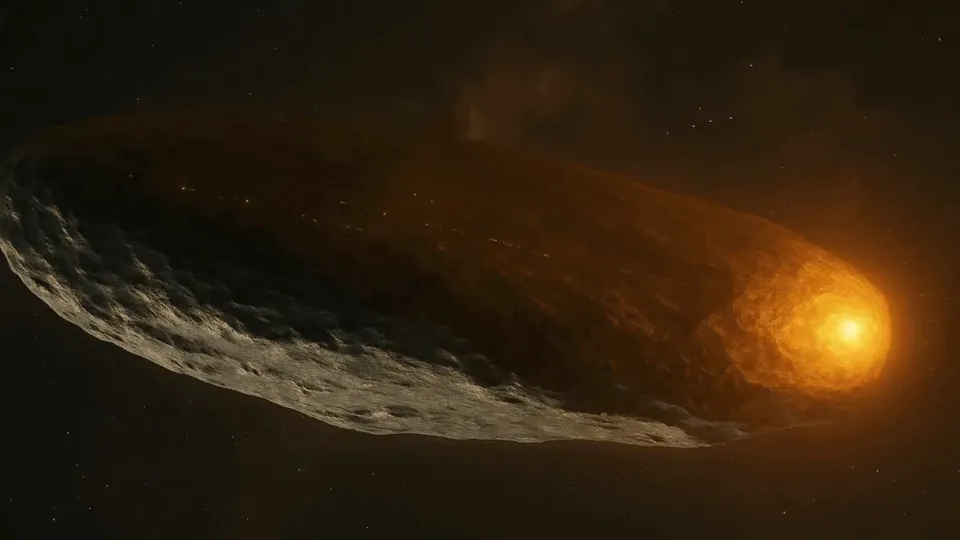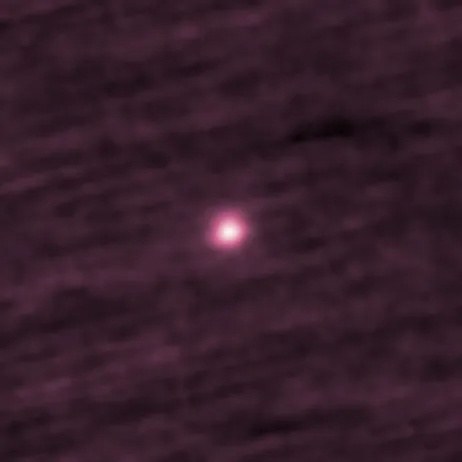 |
NASA confirms that 3I/ATLAS is a purely interstellar object. Photo: NASA . |
After weeks of silence amid the US government shutdown, NASA has finally spoken out about the interstellar object 3I/ATLAS. The announcement was made during a live press conference, marking the first time the agency has released a series of images and data collected from various missions related to the celestial body that has attracted great attention from the scientific community and social networks.
After resuming operations, NASA began by addressing the long-standing controversy. The agency confirmed that there was no evidence to support speculation that 3I/ATLAS was a man-made object. Instead, observational data consistently showed that it was a comet from outside the Solar System, the third interstellar object ever discovered by humans.
At the press conference, the NASA team presented a series of images collected over several months, from missions orbiting Mars to probes exploring the far reaches of the Solar System. Each source of data contributed to clarifying the physics of 3I/ATLAS, especially the appearance of dust and gas characteristic of comets approaching the Sun.
One of the more surprising announcements came from observations by the SOHO spacecraft, which is used to monitor solar activity. The instrument recorded 3I/ATLAS even though the object was 358 million kilometers away at the time. According to NASA, SOHO's observation of the object at such a great distance was unexpected, because comets are usually too faint to be visible under these conditions.
NASA also released the most anticipated image, taken from the Mars orbiter MRO. As 3I/ATLAS approached about 29 million kilometers, MRO's system captured a rare close-up image showing the dust surrounding the comet's nucleus. This is a common sign of icy material being heated by sunlight, and also evidence supporting NASA's assertion that the object is not artificial.
 |
NASA's STEREO Observatory has been tracking the interstellar comet 3I/ATLAS for the past two months. Image: NASA . |
Meanwhile, the STEREO observatory provided complementary data by combining multiple images with different exposures to separate the comet signal from the background noise. The resulting image of 3I/ATLAS appears as a steady mass of light, consistent with what scientists expect from a comet moving through interstellar space.
According to NASA calculations, 3I/ATLAS will reach its closest point to Earth on December 19. However, the distance will still be about 267 million km, equivalent to 700 times the distance from Earth to the Moon. The US National Aeronautics and Space Administration affirmed that this event does not pose any danger.
In the coming time, space agencies plan to launch more observation campaigns to take advantage of this rare opportunity. 3I/ATLAS is an important research object, contributing to expanding human understanding of celestial bodies from outside the Solar System.
Source: https://znews.vn/nasa-he-lo-hinh-anh-ve-vat-the-la-post1604283.html


![[Photo] President Luong Cuong receives President of the Senate of the Czech Republic Milos Vystrcil](/_next/image?url=https%3A%2F%2Fvphoto.vietnam.vn%2Fthumb%2F1200x675%2Fvietnam%2Fresource%2FIMAGE%2F2025%2F11%2F20%2F1763629737266_ndo_br_1-jpg.webp&w=3840&q=75)

![[Photo] Lam Dong: Panoramic view of Lien Khuong waterfall rolling like never before](/_next/image?url=https%3A%2F%2Fvphoto.vietnam.vn%2Fthumb%2F1200x675%2Fvietnam%2Fresource%2FIMAGE%2F2025%2F11%2F20%2F1763633331783_lk7-jpg.webp&w=3840&q=75)
![[Photo] National Assembly Chairman Tran Thanh Man holds talks with South Korean National Assembly Chairman Woo Won Shik](/_next/image?url=https%3A%2F%2Fvphoto.vietnam.vn%2Fthumb%2F1200x675%2Fvietnam%2Fresource%2FIMAGE%2F2025%2F11%2F20%2F1763629724919_hq-5175-jpg.webp&w=3840&q=75)
































































































Comment (0)